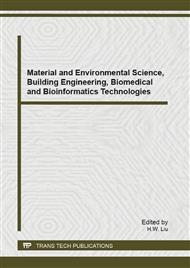p.329
p.333
p.337
p.341
p.347
p.353
p.358
p.362
p.367
Approximate Theoretical Analysis on Excavation Disturbed Zone of a Soft Rock Slope in Suining-Ziyang Expressway Engineering in Southwestern China
Abstract:
A cutting slope model can be simplified as plane strain one, the stress field of cutting slope can be analyzed with elastic wedge body theory. By using strength criterion of slope material (Mohr-Coulomb strength criterion with safety reserve and uniaxial tensile strength criterion), the disturbed zone caused by excavation can be calculated in 3D stress state, so all the disturbed zone after each step of excavation from the top down can be searched out. The main analysis steps for judging disturbed zone are described in the paper, including the methods to calculate the stress state of cutting slope, the unloading value and the scope of disturbed zone after last step of excavation. Finally, an example in Suining-Ziyang expressway engineering is chosen to explain detailedly the analytical process with elastic wedge body theory to determine the disturbed zone.
Info:
Periodical:
Pages:
347-352
Citation:
Online since:
September 2013
Authors:
Keywords:
Price:
Сopyright:
© 2013 Trans Tech Publications Ltd. All Rights Reserved
Share:
Citation:


